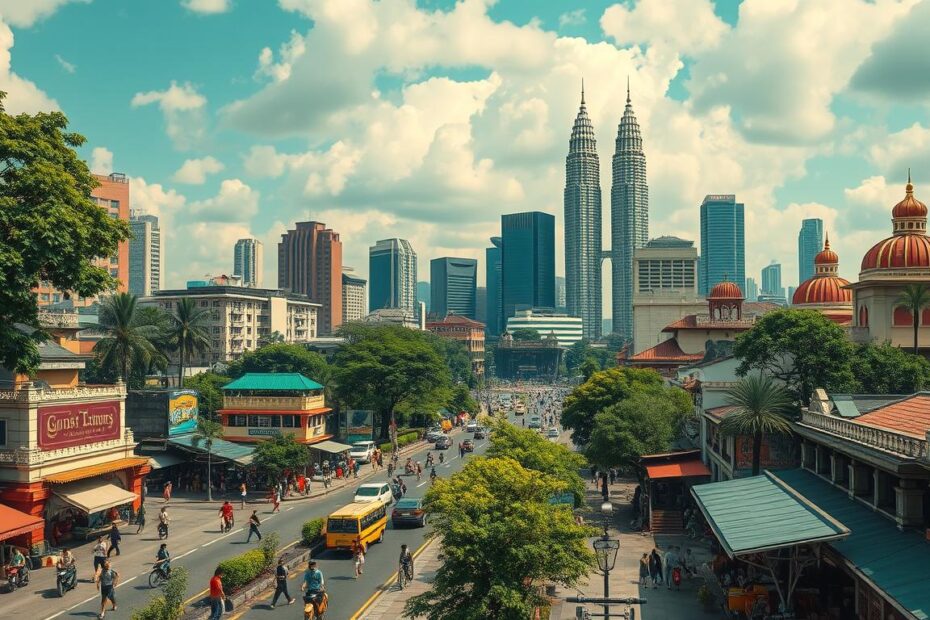Kuala Lumpur, the vibrant capital of Malaysia, showcases a rich tapestry of culture, history, and modernity. As a bustling metropolis, it’s essential for travelers and locals alike to familiarize themselves with its diverse districts. This comprehensive guide aims to answer the question: ‘What areas are included in Kuala Lumpur?’ We’ll explore the key areas to discover while highlighting their cultural and economic significance, ensuring you don’t miss out on the best that this dynamic city has to offer.
Key Takeaways
- Kuala Lumpur is divided into several key districts, each with its unique charm.
- Popular areas to explore include Bukit Bintang, KLCC, and Chinatown.
- Each district offers a mix of cultural experiences, shopping, and dining.
- Understanding the economic significance of each area enhances your visit.
- Exploring these districts provides insight into Kuala Lumpur’s diverse heritage.
Overview of Kuala Lumpur’s Districts
Kuala Lumpur, the vibrant capital of Malaysia, is a city rich in culture, diversity, and modernity, characterized by its distinct districts, each offering a unique experience. When exploring the question, ‘What areas are included in Kuala Lumpur?’, it’s essential to consider the major districts that define this metropolis. The Golden Triangle serves as the city’s commercial heart, hosting major shopping districts like Bukit Bintang and the iconic Petronas Towers. Meanwhile, Chinatown, known for its bustling markets and delicious street food, showcases the city’s rich cultural tapestry. Moving towards the historic core, we find Merdeka Square, surrounded by colonial architecture and significant landmarks. On the outskirts, areas like Bangsar and Damansara are favored for their trendy cafes and nightlife. Other noteworthy districts include Titiwangsa, famous for its lakeside park, and KL Sentral, the city’s transportation hub that connects various modes of travel. Understanding these districts helps visitors navigate and appreciate the multifaceted allure of Kuala Lumpur.
Key Areas to Explore in Kuala Lumpur
Kuala Lumpur, the vibrant capital of Malaysia, is known for its rich cultural heritage and modern skyline. When exploring this bustling metropolis, several key areas stand out, each offering a unique glimpse into the city’s diverse fabric. Bukit Bintang is a must-visit, famous for its shopping malls, night markets, and vibrant nightlife. Just a short distance away is Chinatown, where visitors can experience a blend of culture, food, and history, highlighted by the bustling Petaling Street. The KLCC area is home to iconic landmarks such as the Petronas Twin Towers and the lush KLCC Park, providing a perfect mix of leisure and breathtaking views. For a taste of history, Merdeka Square and the surrounding colonial buildings reveal the country’s heritage. Lastly, the cultural enclave of Little India offers an immersive experience with its colorful shops, traditional eateries, and lively atmosphere. Exploring these areas not only answers the question, ‘What areas are included in Kuala Lumpur?’ but also reveals the vibrant spirit and diverse attractions that make the city a top travel destination.
‘The world is a book and those who do not travel read only a page.’ – Saint Augustine
Cultural and Economic Significance of Each Area
Kuala Lumpur, Malaysia’s vibrant capital, is a melting pot of rich cultures and economic activities, making it a focal point for both locals and tourists. So, what areas are included in Kuala Lumpur? The city is divided into several key districts, each offering unique cultural experiences and economic opportunities. The Golden Triangle, known for its bustling shopping and nightlife, is home to iconic landmarks such as the Petronas Twin Towers and Bukit Bintang, which attract millions of visitors each year. Meanwhile, the historic Merdeka Square showcases colonial architecture and serves as a hub for national celebrations, reflecting Malaysia’s diverse heritage. The Chinatown district, or Petaling Street, is a vibrant market area that epitomizes Kuala Lumpur’s multicultural persona, offering a blend of Chinese cuisine, street shopping, and traditional medicine shops. Additionally, areas like Bangsar are popular for their trendy cafes and nightlife, catering to the urban young professionals, while the Business District promotes economic growth with towering commercial offices and international corporations. Each area contributes to Kuala Lumpur’s status as a significant player in Southeast Asia, illustrating the city’s blend of cultural vibrancy and economic dynamism.


